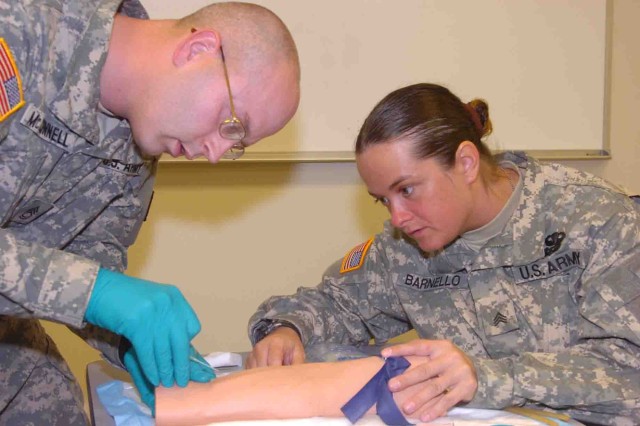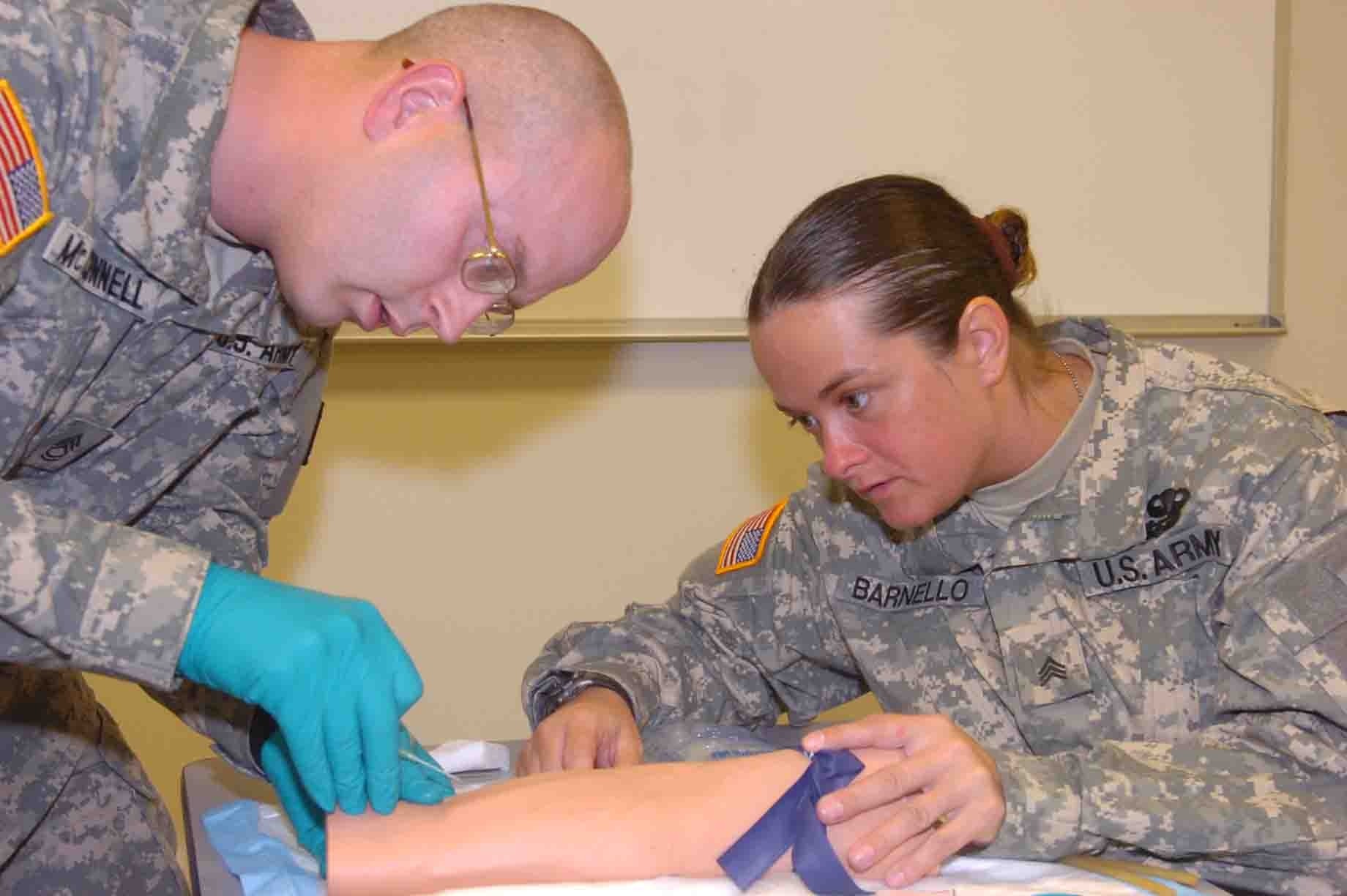
CAMP JOSEPH T. ROBINSON, NORTH LITTLE ROCK, Ark. - In preparation for upcoming deployments, several dozen Arkansas Army National Guardsmen recently studied the ABCs of saving lives.
The Guardsmen, members of Arkansas' 871st Troop Command and 213th Area Support Medical Company, completed the 40-hour combat lifesaver course, which focused on evaluating a casualty's airway, breathing and circulation.
"This is a bridge between a medic and the first aid you learned in basic training," explained Staff Sgt. James Powell, a Hot Springs Soldier with the 296th Medical Company who served as one of the instructors. "Our goal is to have them comfortable enough that if they were on the battlefield and the medic wasn't available or was overwhelmed that they could either assist the medic or complete basic life-saving skills to get the Soldier to a higher echelon of care."
The group studied techniques associated with providing care while under fire, assessing casualties, treating various types of wounds and evacuating casualties from the battlefield.
Powell, a combat medic with three years experience teaching the course, provided the instruction with fellow Conway resident, Sgt. 1st Class Garry Odom, medical platoon sergeant of the 213th.
Odom, who won a national emergency technician award in 2006, said the program involves classroom study and a hands-on teaching environment.
"If we tell them, they will probably forget. If we show them, they may remember. If we let them do it, then they will understand," Odom said. "Hands-on training is so important in this class."
Odom noted that class participants don't gain a medic level of expertise but that the training has battlefield value.
"We have to get the Soldiers to where, number one, they can identify with those Soldiers who are injured what exactly is going on with them," he said. "They are not doing it from a standpoint of becoming a medic. What their emphasis is, is to look at that Soldier and try to help them with what they know how to do and within their scope of practice - basic first-aid type information."
Before students began practicing the medical procedures, they saw real-life examples of injuries troops have suffered in Iraq, the theater to which the 871st and 213th are deploying.
"We try to show that to them so that it brings the realization that this is what they're going into," Odom noted. "This may be what they're seeing, and the casualty may be somebody sitting to your left or right."
As he practiced with a rubber dummy arm, Jacksonville resident Sgt. 1st Class Lucien McConnell, of the 871st, acknowledged some anxiety leading up to the course's practical finale - administering an intravenous solution into a volunteer patient.
"I'm practicing here, but this arm isn't going to holler in pain if I mess up," he said. "That concerns me, but this practice is on-the-job training before you stick someone. So, I think it's valuable."
McConnell added that the training is interesting as well.
"This is probably the one class where I've never gotten tired or wanted to fall asleep in class," he noted.
Spc. Michael Sims, of Conway, agreed.
"The instructors are good, and the class is taught well. So, it's not a hard thing to pick up if you pay attention," he said. "This training is very valuable. I think it will save a lot of lives."

Social Sharing